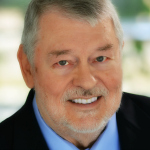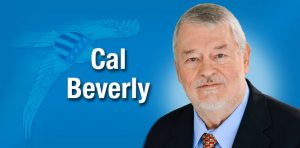“A city isn’t so unlike a person. They both have the marks to show they have many stories to tell. They see many faces. They tear things down and make new again.” — Rasmenia Massoud
The first column in this series (see: https://thecitizen.com/2023/01/03/the-real-story-of-peachtree-citys-founding/) began with Pete Knox, Jr. being informed about a movement to create new and different cities in post-World War II England.
Months later, Knox shows up at the planning firm with his arms full of rolled-up land plat maps, 10,000 acres, telling the men to get started. The main problem with the probable alcohol-influenced real estate impulse purchase was no feasibility studies, no preliminary engineering assessments, and no determination on whether the site was even economically viable existed.
By 1965, a city government had begun to form, but not much of one. Mayor Joel Cowan had worked out some franchise deals with the utilities, but the government itself had no structure. In fact, most of the meeting minutes consisted of the following phrase, “No particular items of business were brought before the meeting and the meeting was adjourned.”
An election was held on Dec. 7, 1965, with 121 votes cast. (The city’s charter called for elections on the first Tuesday in December.) The only polling location was the Civic Room at the Fayette State Bank building. Ralph Jones (1929 – 2009) ran unopposed for mayor.
So, Jones, receiving 118 votes, became the second mayor of Peachtree City with 650 residents at the time.
Upon Jones’ arrival in office, the city’s total assets were $6,940.81. Under Jones, the city purchased its first fire engine and built the first fire station. A police department was created. The city also received a grant to create a water treatment plant (1966) with the county government getting an exclusive franchise.
If you were the city clerk in 1967, you would have received a salary of $10 per month, paid quarterly. The salary was later increased to $20 per month.
The city’s ordinances also began to take shape in 1967. Ordinances were created to forbid mobile homes in Peachtree City. Believe it or not, dogs were one of the biggest issues on Mayor Jones’ agenda. At the time, dogs roamed Fayette County with reckless abandon. Having a dog neutered or spayed was almost unheard of, and the thought of owners getting their dogs vaccinated for rabies was rare.
A wing and a prayer
The second column (see: https://thecitizen.com/2023/01/09/the-behind-the-scenes-history-of-peachtree-city-part-2/) revealed that once you make a massive land deal to create a brand new city with virtually no prior planning — God help you — the odds are not in your favor and the dream has an excellent chance of crashing and burning.
Building a city out of farmland while struggling to make payments to the farmers for their property is, no doubt, a recipe for disaster.
Caught in the quicksand of insufficient resources and potential customers, something had to change, or the new city idea was dead. Things did change for the better in 1969.
The shoemaker’s son
Henry Phipps, Sr. was an English shoemaker who emigrated in the early part of the 19th century to Philadelphia, Pennsylvania before settling in Pittsburgh.
The shoemaker’s firstborn, Henry Phipps, Jr. (1839 – 1930) was an enterprising young man, working as an office boy and bookkeeper. He proved a capable financier and agreed to go into business with his Scottish-born neighbor Andrew Carnegie (1835 – 1919), becoming the second largest shareholder of the new Carnegie Steel Company venture.
The new company built the first steel plants in the United States to use the new “Bessemer” steelmaking process, an inexpensive industrial process for the mass production of steel from molten pig iron, borrowed from Britain. They became an industrial power.
John Pierpont Morgan (1837 – 1913), a man so wealthy he became the predominant source of U.S. government financing, wanted to control the steel industry in addition to banks and railroads. Morgan needed the Carnegie Steel Company and others to form his United States Steel Corporation.
As told by John Train in the New York Times, “Legend has it that Morgan asked, ‘What’s your price?’ Carnegie pushed a piece of paper across the table. Morgan glared at the figures and nodded. That nod yielded about $226 million (1901 dollars) for Carnegie, more than double the price he’d asked in a deal that had fallen through 18 months earlier.”
Henry Phipps, Jr.’s share of the windfall from the sale was $43 million (close to $1 billion in today’s dollars). “Receiving the news, Phipps burbled, ‘Ain’t Andy wonderful?’”
Good for Henry Phipps, Jr. but what has this got to do with Peachtree City, Georgia? Well, Phipps became a philanthropist and a real estate mogul.
Phipps was a pioneer investor in Florida real estate, owning one-third of the town of Palm Beach, 28 miles of oceanfront between Palm Beach and Fort Lauderdale, prime bayfront property in downtown Miami, and 12,000 hectares of land in Martin County.
Money from heaven
Like most wealthy industrialist families, Phipps set up the Bessemer Trust to grow and distribute the family fortune to his heirs. As usually happens, four or so generations later, the heirs demanded more money and complained the trust funds were not growing fast enough.
The Bessemer Securities arm of the trust was created to invest in venture capital deals, publicly traded stocks and bonds, oil and gas tax shelters, and real estate. However, unlike the patriarch Henry Phipps, Jr. who paid cash for his real estate, his progeny preferred to borrow the money.
The capital was secured from the lender and in 1969 the Phipps Land Company was created, allowing for the purchase of land on Hilton Head Island that would later become the Palmetto Dunes Resort, constructing the lagoon system, golf course, tennis facility, and the first villas.
One of their other Phipps investments was the purchase and bailout of the Peachtree City project with their subsidiary Garden Cities Corporation. The founder Pete Knox, Jr., and his investors were bought out, actually turning a profit on the deal.
Finally, in the most roundabout way, destiny charted its course, the shoemaker from England, his son, the son’s friend Andrew Carnegie, the ultra-wealthy J.P. Morgan buyout, a passion for real estate investing, and their family venture capital firm in New York looking for money-making opportunities, and hitting the bullseye 25-miles south of Atlanta.
Add to this Divine providence the same venture capital firm also having a master planned project on Hilton Head Island with many of those out-of-the-ordinary design elements also being assigned to the Peachtree City project: golf courses, signage restrictions, multi-use paths, and more.
J.K. “Chip” Conner was elected mayor in 1970. Subdivision regulations and municipal ordinances were created. Business licenses were required as more businesses emerged.
Howard Morgan (1912 — 2001) was elected in 1972. Arthur D. Little, inc., the world’s first management consultancy firm, and Richard P. Browne Associates turned out the city’s first master plan in 1972-04. They were ambitious, citing a buildout population of 80,000.
In 1974, with Bessemer’s (Phipps Land Company) participation, there were 4,000 residents. Lake Peachtree exists, Flat Creek Country Club happens, Aberdeen Village is nearing completion, the first park is built, and “bicycle paths” are advertised as an amenity.
Life was very good! In 1974, Peachtree City was growing fast, adding 2,000 residents in a single year. A person could buy a homesite for $7,000 and a 12-acre “estate” site for $30,000. The new city was attracting attention in a big way.
It was truly amazing how everything fell into place and the project was saved.
It was better than the American dream. It was a miracle, at least until 1979. You have heard the old expression that “things are too good to be true” — that was Peachtree City in 1979. More on that upcoming in The Citizen.
To read a tribute to former Mayor Ralph Jones, click here (http://archive.thecitizen.com/node/40852.html).
The Bessemer organization still exists and is still trying to turn a buck for the Phipps descendants as Bessemer Venture Partners. They have a web page showing the great venture capital deals they missed over the years (see: https://www.bvp.com/anti-portfolio).
[Brown is a former mayor of Peachtree City and served two terms on the Fayette County Board of Commissioners. You can read all his columns by clicking on his photo below.]











Leave a Comment
You must be logged in to post a comment.